
In celebration of Pixar’s upcoming movie, Turning Red, Upcoming Pixar attended an early press day where the film’s creators talked about story, art, visual effects, animation, and music. As Pixar’s 25th feature, Turning Red marks many firsts for the animation studio. Most notably, the film is told from the perspective of a teenage girl living in the early 2000’s, and the production was led by an all-women team whom lent their own experiences to the story. How exciting!

Domee Shi pitched three “coming-of-age” teenage girl stories to Pixar, as it was something that wasn’t widely represented in media at the time. In 2017, Shi was asked why the main subject of Bao was a boy — she responded and said “Oh, because I only had eight minutes to tell this story. For a mother/daughter story, I’d need an entire feature film to unpack that”. Ultimately, Pixar’s creative leadership team chose Turning Red due to her personal connection to the story since it was inspired by her relationship with her mother.
Shi described her relationship with her parents as “super close” but as she started to grow up, her mother didn’t understand her new interests. At its core, Shi said “Turning Red is just inspired by this universal struggle of growing up and trying to figure out how to honor your parents but also stay true to yourself” which is a sentiment that many first-generation children can identify. Mei Lee’s transformation into the red panda is an “adorable metaphor” for the “scary, unadorable, awkward, and cringy” changes that people go through during puberty. Shi was asked how she brought authenticity to the Chinese-Canadian experience and she explained, it’s “baked” into Turning Red because it illustrates the struggles of Mei, an immigrant kid caught in between two worlds: east and west.

In the spirit of authenticity, the production team for Turning Red worked hard to reflect Shi’s vision of an “Asian tween fever dream” which meant learning how to stylize 3D animation. Production Designer, Rona Liu, worked with Domee Shi on Bao and they bonded over their Chinese heritage and a love for cute things. In this film, Liu was asked to draw from her own relationship with her mother which inspired the final look of an opening sequence. However, Liu and her team also wanted to add all the things they loved at age thirteen. She stated that it was a “mix” of east and west. This included boy bands, cute accessories, anime, and TV shows. A couple sources of inspiration were Sailor Moon, Paprika, and One Piece. Since Turning Red is told from Mei’s point of view, Liu said that they imagined her world as “very vibrant” and “very colorful”. The color and lighting of the film are dependent on Mei’s emotional state. We can expect that the production team had a fun time expressing Mei’s feelings as she cycled through her transformation from Mei to Panda Mei!

On to Visual Effects! Danielle Feinberg was the Visual Effects Supervisor for the film (the first woman to hold this position in 20 years!) and her main challenge was translating 2D inspiration into 3D which is traditionally hyperrealistic. A first step to solving this problem was focused on the shapes of Mei’s world. The team described the style as “cute, chunky” which Feinberg said they applied to the movie. They then added color and shading in order for the shapes to appear as more graphic and rounded. The second challenge was Panda Mei’s expressions. Feinberg described this as one of her main worries because the range of shapes was technically challenging. She had recently learned of a new technology called “profile movers” and as she explained, it would allow the character rigger to adjust curves easily instead of manually tweaking the shape. However, at the time, the technology was not fully proven and Feinberg made the difficult decision to take the risk in order to push Panda Mei’s expressions to a new level and resemble its anime inspirations. If you’ve seen the latest posters for Turning Red, you can see that it was a great success!

Patty Kihm and Aaron Hartline were the supervising animators for Turning Red. It was evident to them that the tone of the film was “playful” after seeing Shi’s storyboards. The animation stylistic choices that they made were based on the characters themselves. In order to reflect Mei’s teenage awkwardness, they created animation tests that allowed them to explore her mannerisms. For example, they discovered that Mei is “charming, messy, and funny all at the same time” which makes her relatable as a character. Influenced by the idea of “east meets west” per Shi’s vision, the animation team referenced anime and the characters’ vast range when it came to their eye shapes. This allowed the characters of the film to emote in the same eye language. The next animation stylistic choice was isolated motion! In Kihm and Hartline’s careers, they never had a director ask for this; however, Domee asked because it would amplify the movie’s unique style. Hartline described this as “untraining” the animators since they are taught that motion doesn’t come from single point. In Turning Red, it does! In the scene where Panda Mei pushes her schoolmate into the stall, that is an example of isolated motion where the only thing that moves is her arm. Pretty cool, huh? Another fun fact: Mei’s friends move in unison! They start and stop moving at the same time. This signifies that they are a team and are super close.

Producer, Lindsey Collins announced at the press day that Ludwig Göransson was the film’s composer. He comes from a diverse background — from producing for artists like Childish Gambino to receiving an Oscar for his work on Marvel’s Black Panther! Collins said he brought the “perfect mix of traditional score, and also a deep, early 2000’s pop knowledge” to the movie.
Finally, 4*Town! In Turning Red, we are introduced to the fictional boy band, 4*Town. “Boy bands have often by ridiculed by the media, as most things that teen girls are obsessed with are, and we really wanted to pay tribute to this cultural phenomenon in the film”, Shi stated. It was important for boy bands to play a prominent role in the movie because they represent the “first foray into adolescence” for many people. The design of 4*Town was inspired by bands like NSYNC, Backstreet Boys, and O-Town. However, there was a contemporary twist and it resulted in a more diverse group! For example, “One of the boy band members, Tae Young, he’s definitely a homage to the K-Pop boy bands”, Shi said. Finneas O’Connell and Billie Eilish worked on three songs for the boy band. Collins said they weren’t sure if they would meet with them so they created a handmade scrapbook to grab their attention! “It had doodles and drawings and photos and fan art and fake ticket stubs, and we cut out Billie and Finneas’s heads and put them on 4*Town characters”, laughed Collins. In the end, they agreed and Finneas voices Jesse, a member of the band.

Personally, I am incredibly excited to see this movie. I believe Turning Red will be a great depiction of supportive friendships as well as a nuanced mother/daughter relationship. Not only that, I look forward to seeing Mei understand and love herself for who she is. In a time where teenage girls are often vilified for their interests, I’m glad to see them being celebrated!
Domee Shi’s Turning Red premieres March 11th, exclusively on Disney+.
Tags: press day, turning red Last modified: February 18, 2022
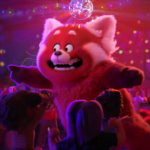
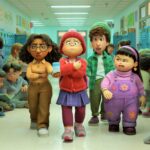
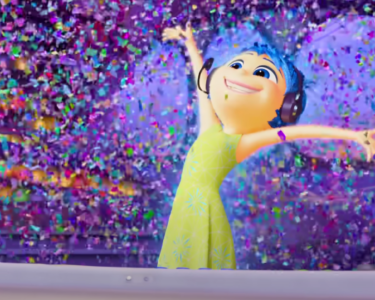

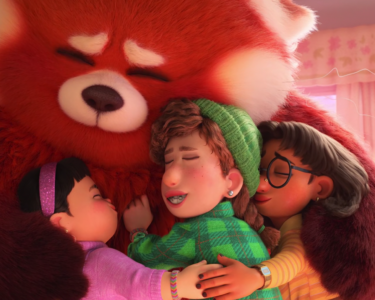
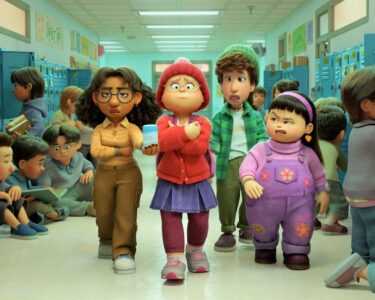


[…] compañeros de Pixarplanet han podido disfrutar de una presentación de la película, debido a que quedan muy pocos días para […]